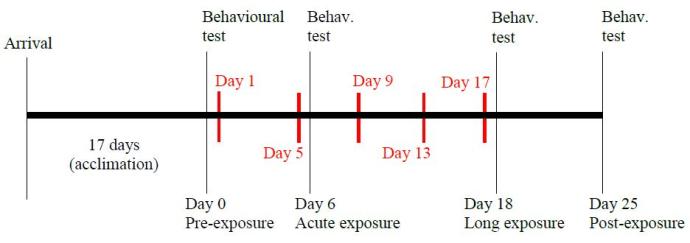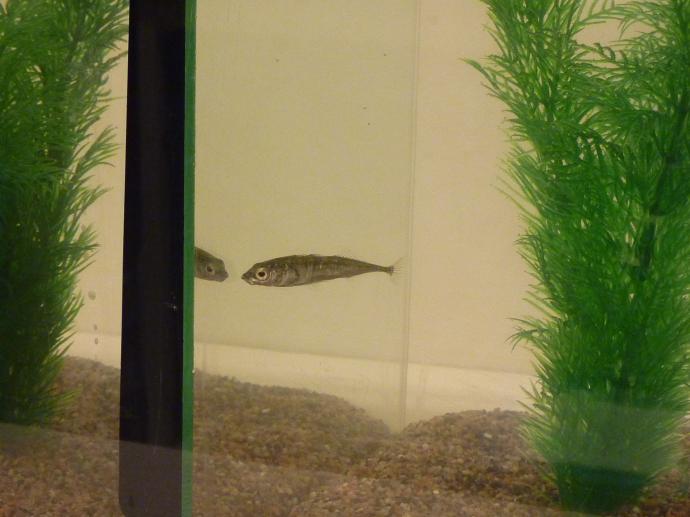Methods
Pharmacologial treatments
To study the role of serotonin and dopamine in exploration, boldness and sociability, 360 three-spined sticklebacks were exposed to fluoxetine and ropinirole in four different treatments. In total there were 12 tanks, three tanks / treatment with 30 fish / tank.
Fluoxetine increases the levels of serotonin in the sinaptic gap, enhancing serotonergic activity. Ropinirole is a dopamine agonist that binds dopamine D2 receptors, activating dopamine pahways.
The four different treatments were the following:
a) Control: no drug exposure.
b) Fluoxetine: 200 ng L-1
c) Ropinirole: 2,500 ng L-1
d) Fluoxetine + Ropinirole: 200 ng L-1 + 2,500 ng L-1
Fish were exposed to these treatment for over two weeks and their behaviour measured at four different time points: before, during and after drug exposure (Figure 1).

Behavioural tests
Fish were individually tested in a tank prepared for this purpose. The environment of the tank was new every time to create a sensation of novelty during the test. One of the large sides of the the tank was divided in eight equal squares. To asses for exploration, boldness and sociability two behavioural assays were used: a novel environment assay and a mirror assay.
1. Novel environment assay: it lasted for five minutes and it was used to assess exploration and boldness. A fish was placed in the upper-left square and the following variables were measured:
a) Freezing behaviour (behaviour related to boldness): time that the fish spent still until it moved once it was carefully placed in the tank.
b) Risky behaviours (behaviour related to boldness): time the fish spent in the two-upper middle squares.
c) Explorative behaviour (behaviour related to exploration): number of squares visited.
2. Mirror test: it started right after the novel environment test fisnished. A mirror was leaned to one side of the tank, the one closest to the fish. It lasted for five minutes and the folowing varibales were measured:
a) Affiliative behaviours (behaviour related to sociability): time spent within one body length to the mirror.
3. Parasite status: the presence of the parasite G. anomala was also registered to be included in the further analyses.

Responsible for this page:
Director of undergraduate studies Biology
Last updated:
07/13/18
